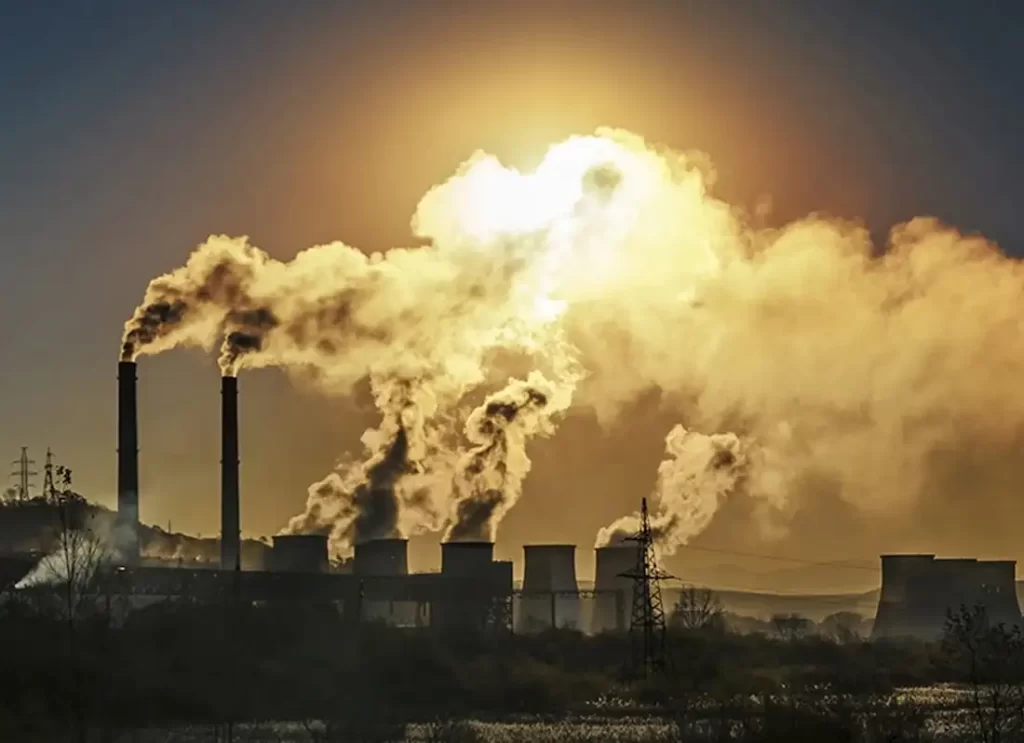Causes of Climate Change– Humans are increasingly influencing the climate and the earth’s temperature by burning fossil fuels, cutting down forests and farming livestock. This adds enormous amounts of greenhouse gases to those naturally occurring in the atmosphere, increasing the greenhouse effect and global warming.
Gases that cause global warming
The greenhouse effect is the primary cause of climate change. Some gases in the Earth’s atmosphere function like greenhouse glass. They trap the sun’s heat and preventing it from escaping into space, resulting in global warming. Many of these greenhouse gases are naturally occurring, but human activity is increasing their quantities in the atmosphere, particularly: CO2, methane, nitrous oxide, and fluorinated gases are all examples of fluorinated gases.
Human-caused CO2 is the most significant contributor to global warming. Its concentration in the atmosphere has grown to 48% over pre-industrial levels by 2020. (Before 1750). Human activity also emits lower amounts of other greenhouse gases. Methane is a stronger greenhouse gas than CO2, although it has a shorter lifespan in the atmosphere. Like CO2, nitrous oxide is a long-lasting greenhouse gas that builds up in the atmosphere over decades to centuries.
Between 1890 and 2010, natural processes such as variations in solar radiation or volcanic activity are estimated to have contributed less than 0.1°C to overall warming. The average temperature of the Earth’s surface is maintained by a balance of solar and terrestrial radiation. Because the frequencies of solar radiation are extremely high and the wavelengths are relatively short—close to the visible section of the electromagnetic spectrum—it is commonly referred to as “shortwave” radiation. Because the frequencies are low and the wavelengths are long—somewhere in the infrared section of the spectrum—terrestrial radiation is commonly referred to as “long wave” radiation. Solar energy that moves downward is usually measured in watts per square meter.
The total energy of incoming solar radiation at the top of Earth’s atmosphere (the “solar constant”) is around Humans are increasingly influencing the climate and the earth’s temperature by burning fossil fuels, cutting down forests and farming livestock. This adds enormous amounts of greenhouse gases to those naturally occurring in the atmosphere, increasing the greenhouse effect and global warming.
Share to others Causes of Climate Change
Gases that cause global warming
The greenhouse effect is the primary cause of climate change. Some gases in the Earth’s atmosphere function like greenhouse glass. They trap the sun’s heat and preventing it from escaping into space, resulting in global warming. Many of these greenhouse gases are naturally occurring, but human activity is increasing their quantities in the atmosphere, particularly: CO2, methane, nitrous oxide, and fluorinated gases are all examples of fluorinated gases.
Human-caused CO2 is the most significant contributor to global warming. Its concentration in the atmosphere has grown to 48% over pre-industrial levels by 2020. (Before 1750). Human activity also emits lower amounts of other greenhouse gases. Methane is a stronger greenhouse gas than CO2, although it has a shorter lifespan in the atmosphere. Like CO2, nitrous oxide is a long-lasting greenhouse gas that builds up in the atmosphere over decades to centuries.
Between 1890 and 2010, natural processes such as variations in solar radiation or volcanic activity are estimated to have contributed less than 0.1°C to overall warming. The average temperature of the Earth’s surface is maintained by a balance of solar and terrestrial radiation. Because the frequencies of solar radiation are extremely high and the wavelengths are relatively short—close to the visible section of the electromagnetic spectrum—it is commonly referred to as “shortwave” radiation. Because the frequencies are low and the wavelengths are long—somewhere in the infrared section of the spectrum—terrestrial radiation is commonly referred to as “long wave” radiation. Solar energy that moves downward is usually measured in watts per square meter.
The total energy of incoming solar radiation at the top of Earth’s atmosphere (the “solar constant”) is around 1,366 watts per square meter each year. After accounting for the fact that solar energy reaches only half of the planet’s surface at any given moment, the average yearly surface isolation is 342 watts per square meter.
Emissions are increasing for several reasons.
Carbon dioxide and nitrous oxide are produced when coal, oil, and gas are burned. Destruction of forests (deforestation).By absorbing CO2 from the atmosphere, trees assist to control the climate. When trees are chopped down, the positive impact is gone, and the carbon contained in the trees is released into the atmosphere, so contributing to the greenhouse effect.
Increased livestock production.
When cows and sheep digest their meal, they create a lot of methane. Nitrous oxide emissions are produced by nitrogen fertilizers. Fluorinated gases are released by fluorinated gas-using equipment and goods. These emissions have a warming impact that is up to 23 000 times stronger than CO2.
Warming of the planet
The decade 2011-2020 was the hottest on record, with global average temperatures rising 1.1 degrees Celsius over pre-industrial levels in 2019.Global warming caused by humans is currently growing at a pace of 0.2°C every decade. A 2°C increase in temperature relative to pre-industrial periods has major negative consequences for the natural ecosystem as well as human health and wellbeing, including a substantially increased likelihood of harmful and potentially catastrophic changes in the global environment. As a result, the world community has recognized the need of keeping global warming below 2°C and pursuing measures to keep it below 1.5°C.
Quranmualim Latest Blogs
Learn What is Light? – Science
What is Climate Change? – Science
Dark Matter Meaning | What is Dark Matter?
Learn The Processing of Water Cycle – Science

